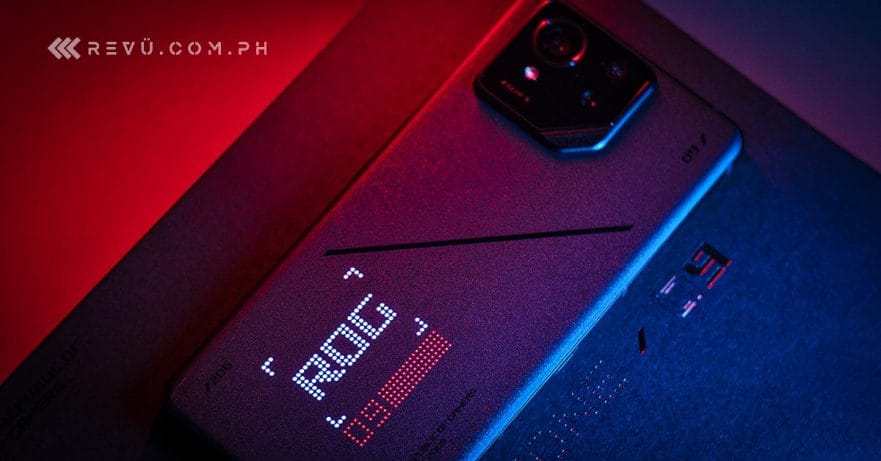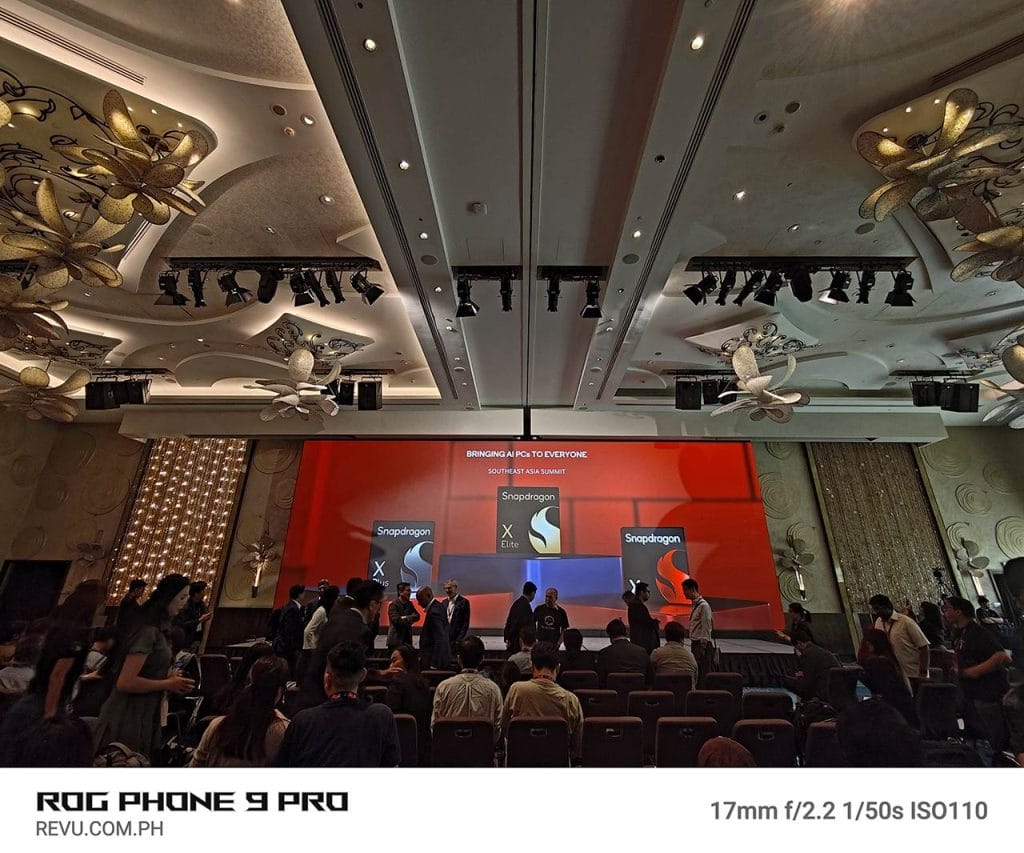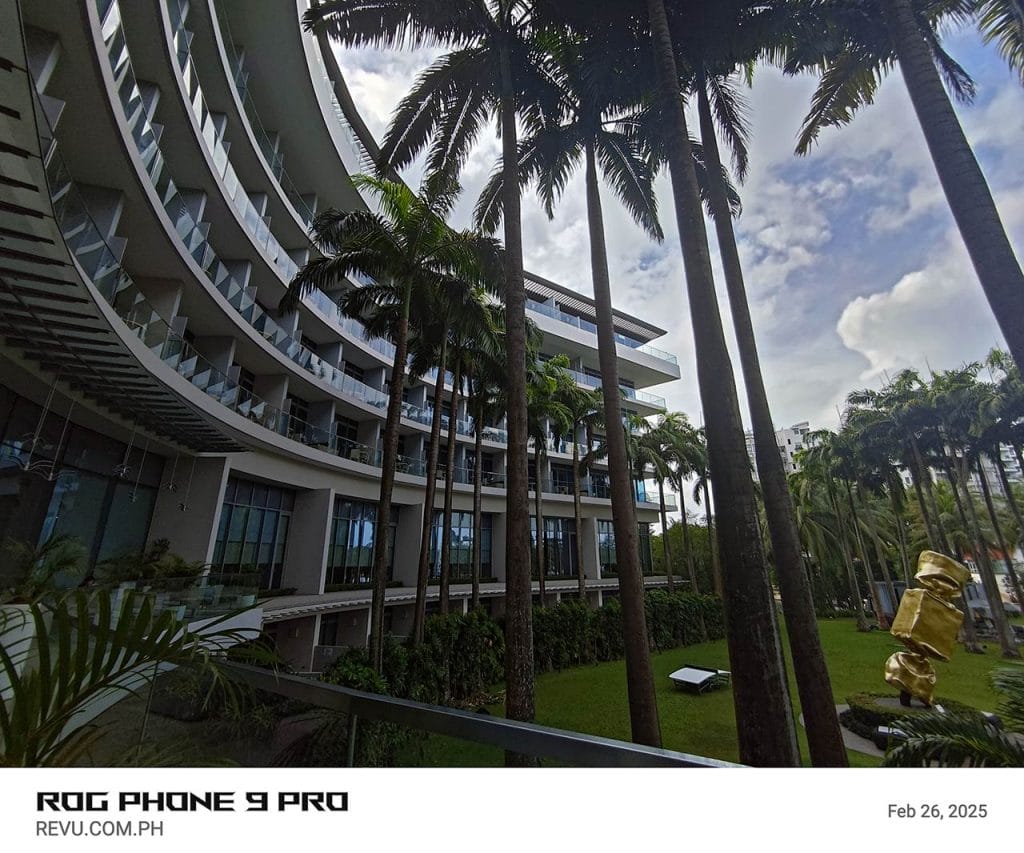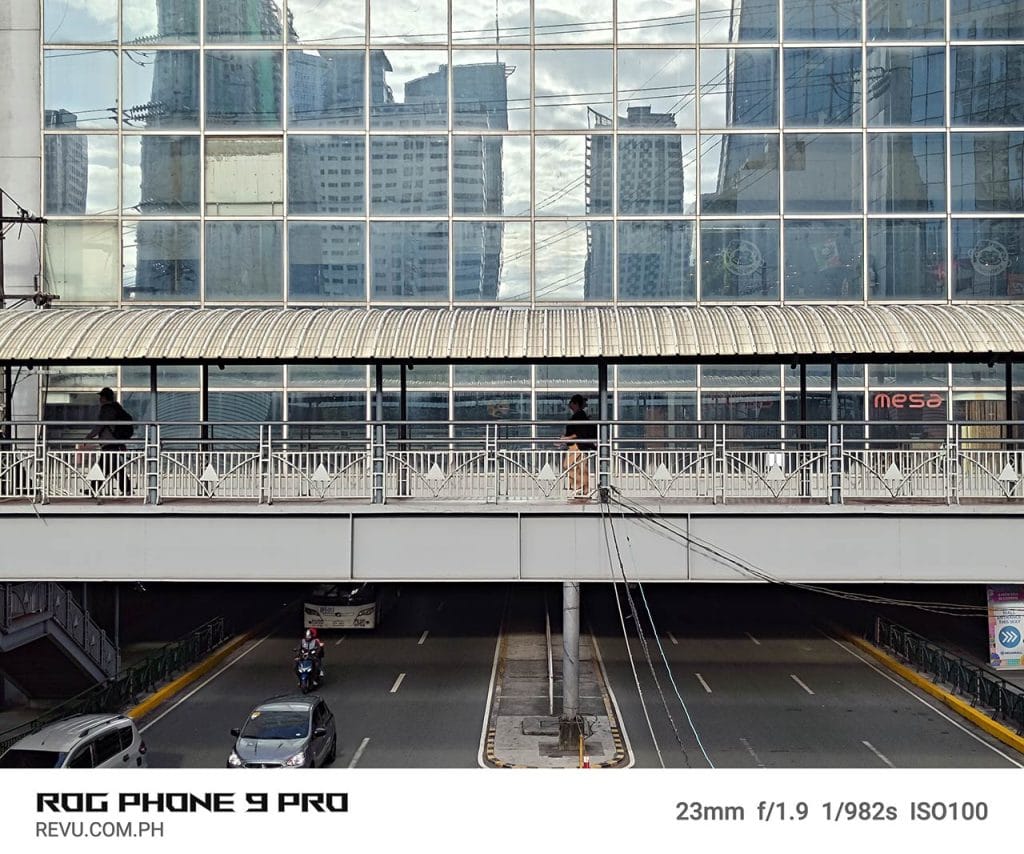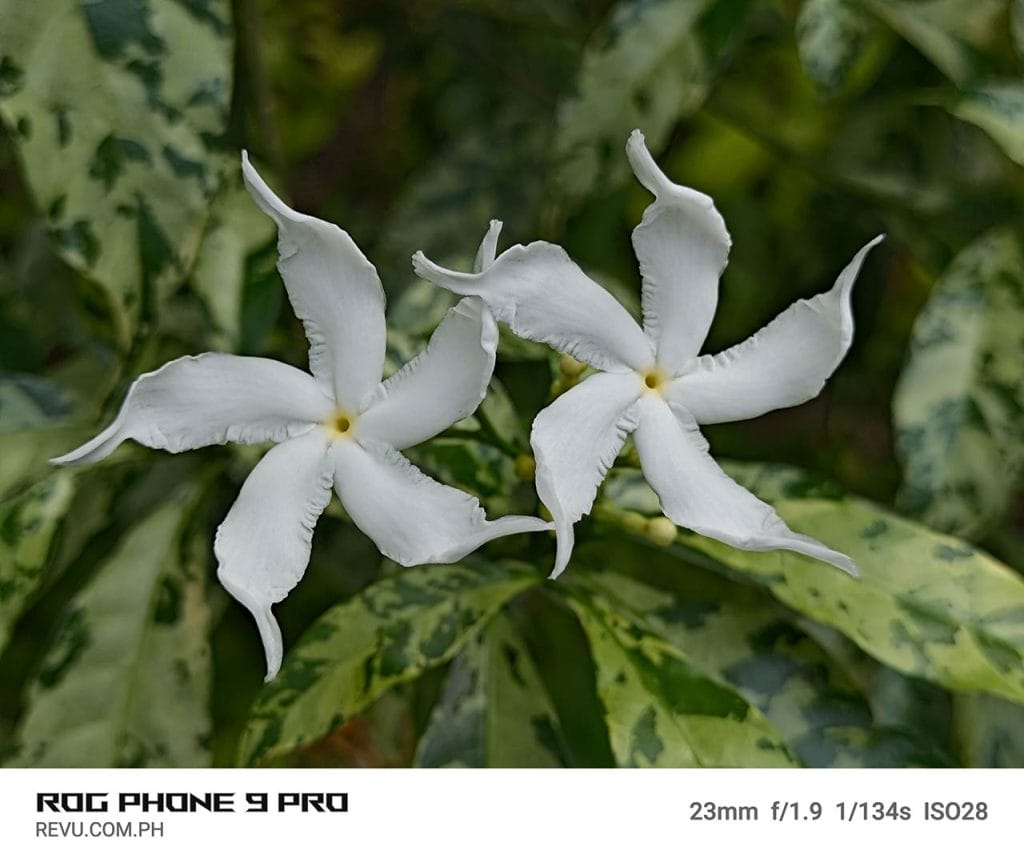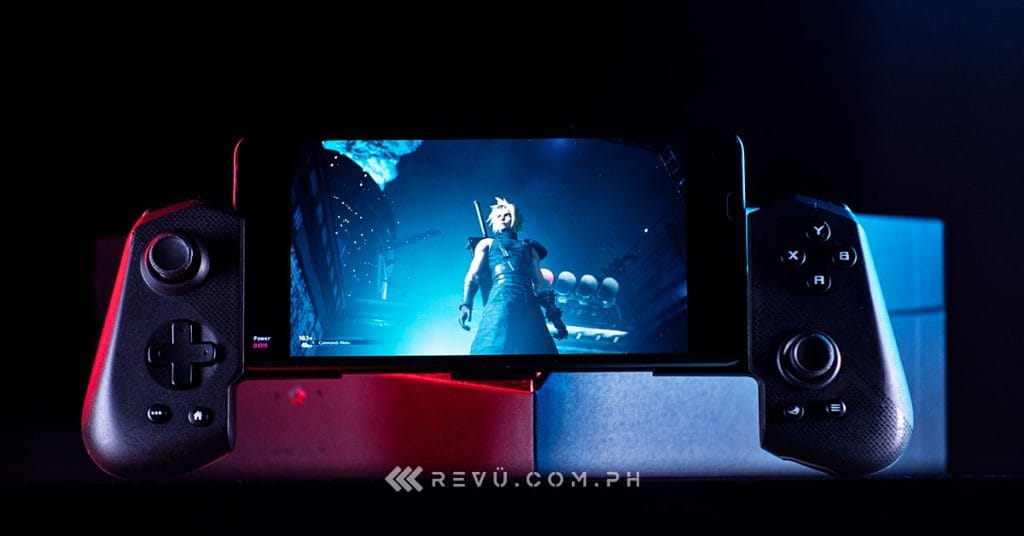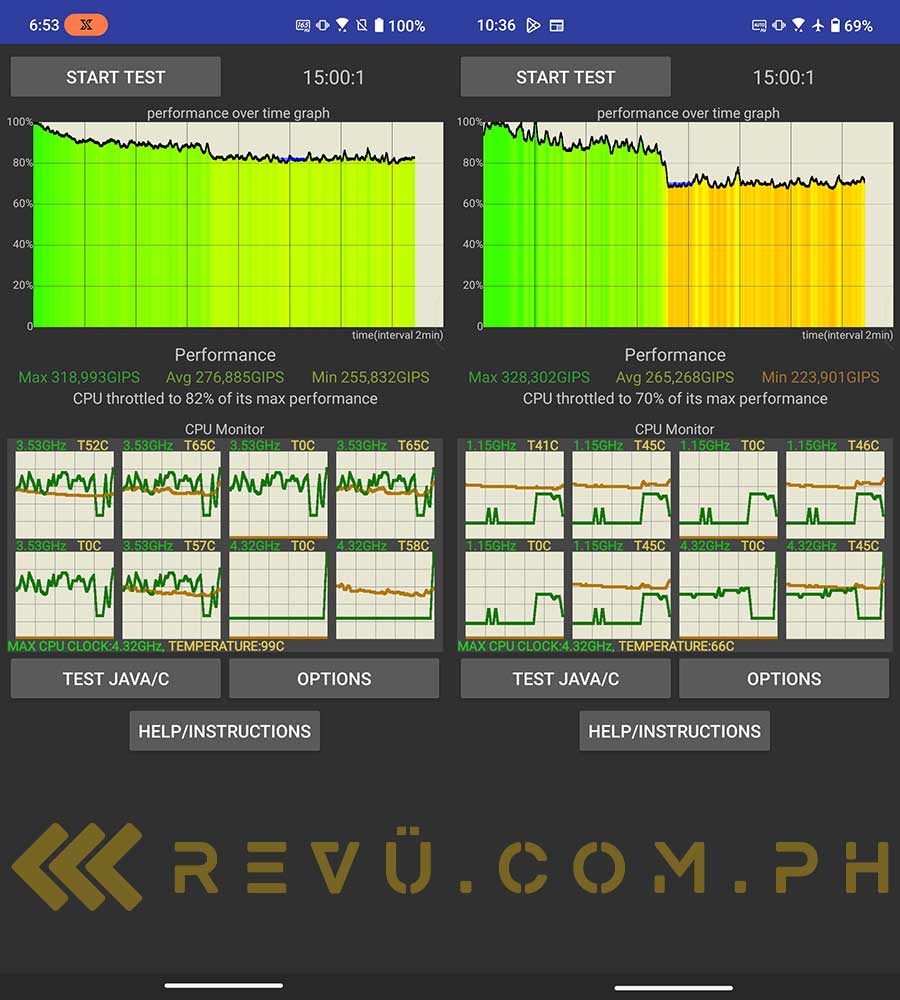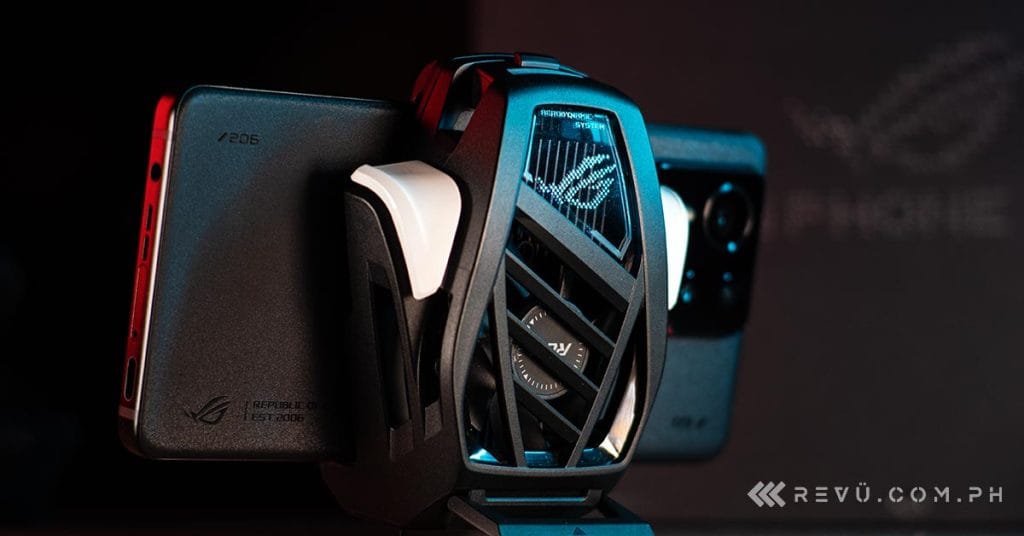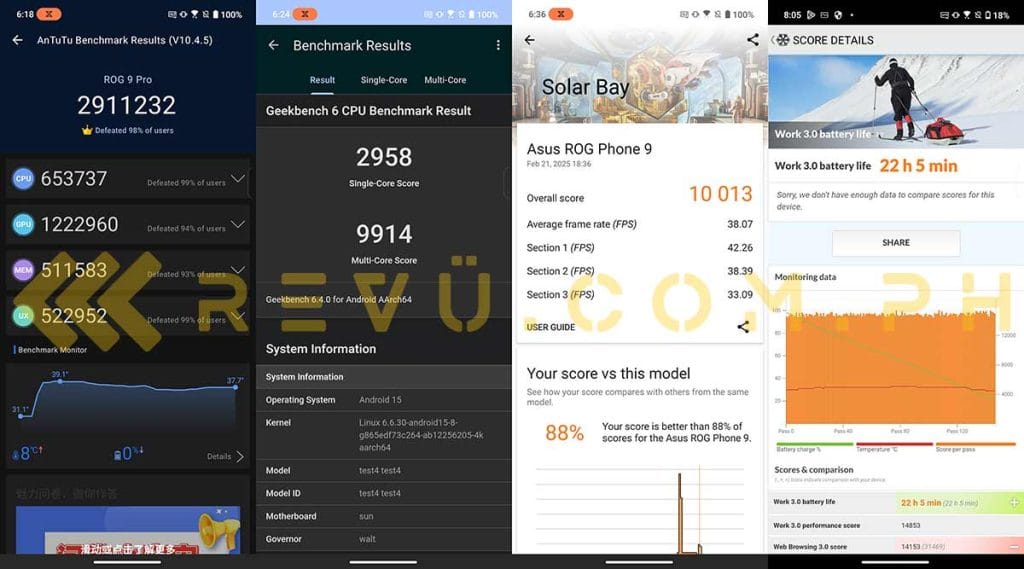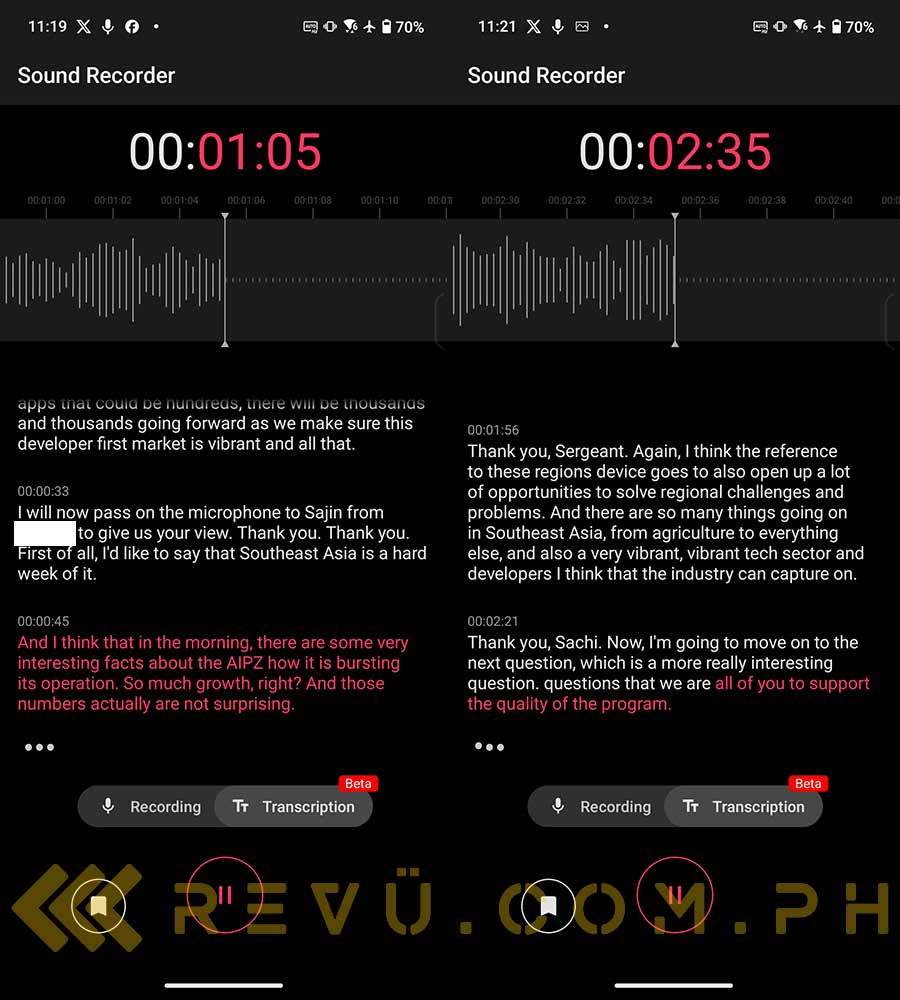ASUS recently unleashed the ROG Phone 9 Pro and its more accessible sibling, the ROG Phone 9 FE, in the Philippines.
After more than a month of rigorous testing with the Pro variant, it’s clear: This isn’t just another gaming phone; it’s a performance juggernaut — arguably the fastest Android experience currently available.
However, this power comes at a premium. The ASUS ROG Phone 9 Pro enters the Philippine market with a price point reflecting its premium status. The 16GB RAM/512GB storage variant retails for P62,995 (around $1,109), while the top-tier configuration, boasting a staggering 24GB of RAM and 1TB of storage, commands a P76,995 ($1,355) price tag. The latter attempts to soften the blow with the bundled AeroActive Cooler X Pro, a vital component for pushing the smartphone’s limits.
The question remains: Does the sheer performance justify the significant investment? Let’s dissect the ROG Phone 9 Pro to determine if it truly earns its place at the top.
@revuphilippines Level up your game! 🚀 Unleash the power of the #ROGPhone9 Series — where cutting-edge features meet elite gaming accessories. Check out the lineup’s Philippine pricing and availability details at #RevuDotComDotPH / www.revu.com.ph. 🎮✨ Our review should be up soon! #ROGPhone9Pro #ROGPhone9FE #ASUSROGPhone9 #ASUSROGPhone9Pro #ASUSROGPhone9FE #ROG #AIOnGameOn #ASUS #ASUSPH #ASUSPhilippines @ROG Global @monch @Alora Uy Guerrero ♬ original sound – Revu Philippines
The ASUS ROG Phone 9 Pro preview video we posted on March 13
Building the beast
The ROG Phone 9 Pro retains the design language of its predecessor. ASUS continues to refine the gaming aesthetic of the ROG Phone line, and this iteration represents its most streamlined and accessible yet. Gone are the aggressive lines and exposed metal; the look is now minimalist, with only subtle markings. You won’t find any bright colors or gaudy design choices here — the overall aesthetic is mostly subdued. This marks ASUS’s strongest push to broaden its consumer appeal, potentially (and unfortunately) at the expense of its core gamer fanbase.
ASUS doubled down on the AniMe Vision matrix, though, and it’s thankfully the one design element it needed to pay more attention to. The Pro’s AniMe Vision matrix is the Taiwanese company’s largest yet, and it seamlessly blends when off. This mini-LED panel features over 20 pre-loaded animations, triggered by various device actions, and displays information like battery level, time, and weather. As usual, you can also import custom animations, and tapping phones with other ROG Phone 9 Pro users unlocks hidden animations.
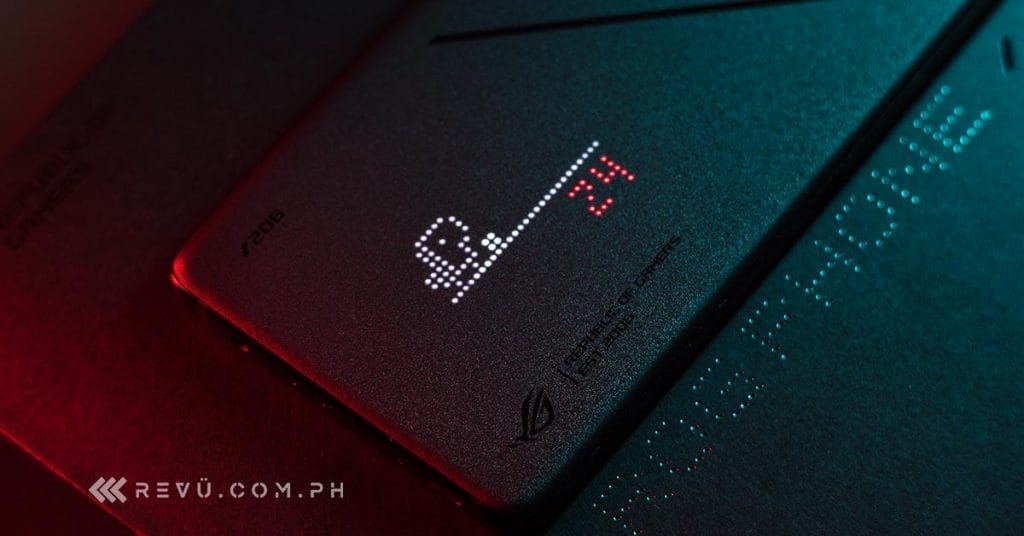
One new exclusive feature for the bigger AniMe matrix on the ASUS ROG Phone 9 Pro is the ability to play retro mini-games, accessible through a dedicated app and controlled via the AeroActive side triggers. Currently, four mini-games are available: Aero Invaders, Brick Smasher, Snake Venture, and, our favorite, Speedy Runner.
Coming to the hardware, the ROG Phone 9 Pro feels solid and boasts IP68 ingress protection, impressive given the inclusion of a 3.5mm audio jack and a USB-C side port. Speaking of which, the side port is vastly superior to the one on the bottom, supporting faster transfer speeds and video output up to 4K at 30Hz, 1440p at 75Hz, or 1080p at 144Hz, while both handle 65-watt PD charging. The device features Gorilla Glass Victus 2 on the front and an undisclosed Gorilla Glass variant on the back, alongside an aluminum middle frame.
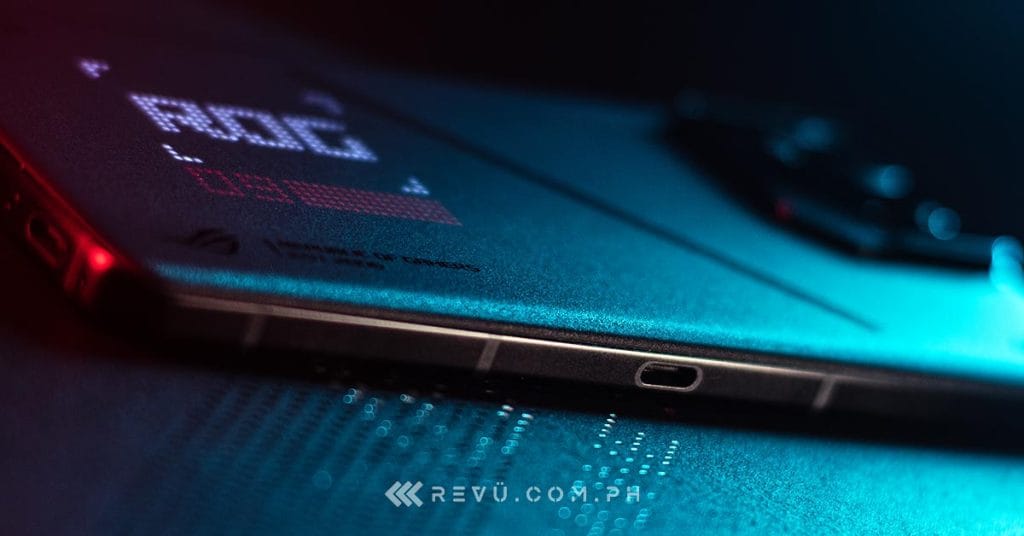
Up front, you’re looking at a 6.78-inch Samsung E6 OLED panel with reasonably slim bezels and a centered punch hole. ASUS advertises the same brightness levels as the ROG Phone 8 — 2,500 nits peak and 1,600 nits full-screen — and these remain competitive for a 2025 flagship.
Notably, the display now supports a 185Hz refresh rate, though only in select games like Dead Cells and Brawl Stars. For a comprehensive list of titles optimized for the screen’s max refresh rate, we recommend exploring the Armoury Crate app, where ASUS provides a curated selection with direct links to the Play Store for convenient downloads.
Taking cues from its predecessor, the ROG Phone 9 Pro features a triple-camera setup, with dedicated ultrawide and telephoto lenses complementing the main camera. However, there are a few key changes. The primary 50-megapixel camera now packs a Sony Lytia 700 image sensor, paired with an improved six-axis hybrid gimbal stabilizer. The 13-megapixel ultrawide lens remains largely unchanged from the previous model, while the 32-megapixel telephoto uses an Omnivision OV32 sensor, offering 3x optical zoom and up to 30x hybrid zoom. ASUS’s HyperClarity technology promises enhanced details, even when zoomed in, using unprocessed or RAW files.
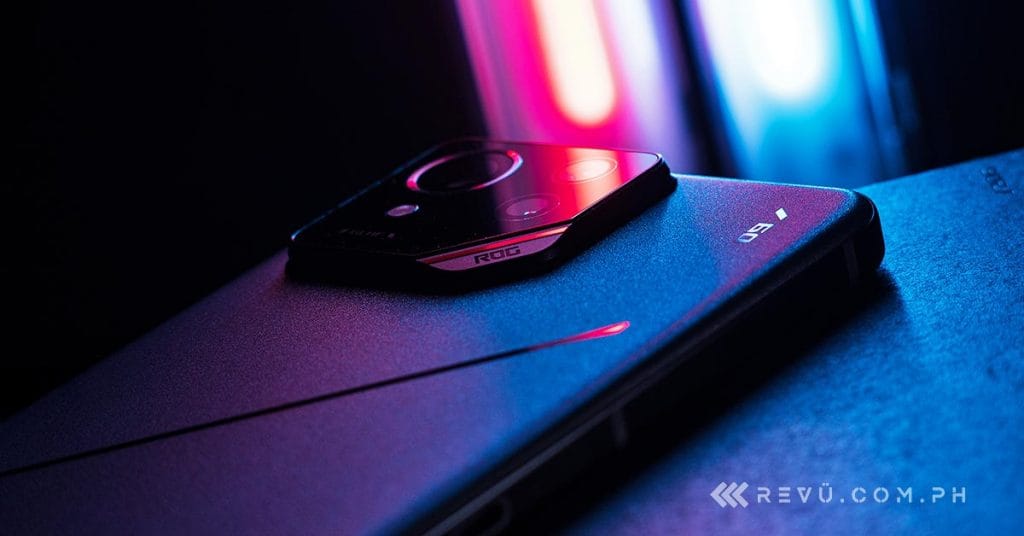
The main camera captures binned 12.5-megapixel photos, delivering good detail and accurate colors, though it has room for improvement in dynamic range. The ultrawide camera produces adequate shots, but lacking in impact, with noticeable softness, especially around the edges. The 32-megapixel 3x telephoto outputs 8-megapixel images. In daylight, its pictures are decent, but not exceptional, showing soft detail and limited dynamic range. Both the ultrawide and telephoto cameras maintain accurate color representation, closely matching the main camera’s output.
Selfies taken with the 32-megapixel front camera look good, capturing a decent level of detail and preserving skin texture. Skin tones seem to be rendered accurately, and colors align well with the rear-facing cameras.
For video, the ASUS ROG Phone 9 Pro supports up to 8K recording at 30 FPS and 4K at 60 FPS. Two stabilization modes are available, and both prove effective in real-world use.
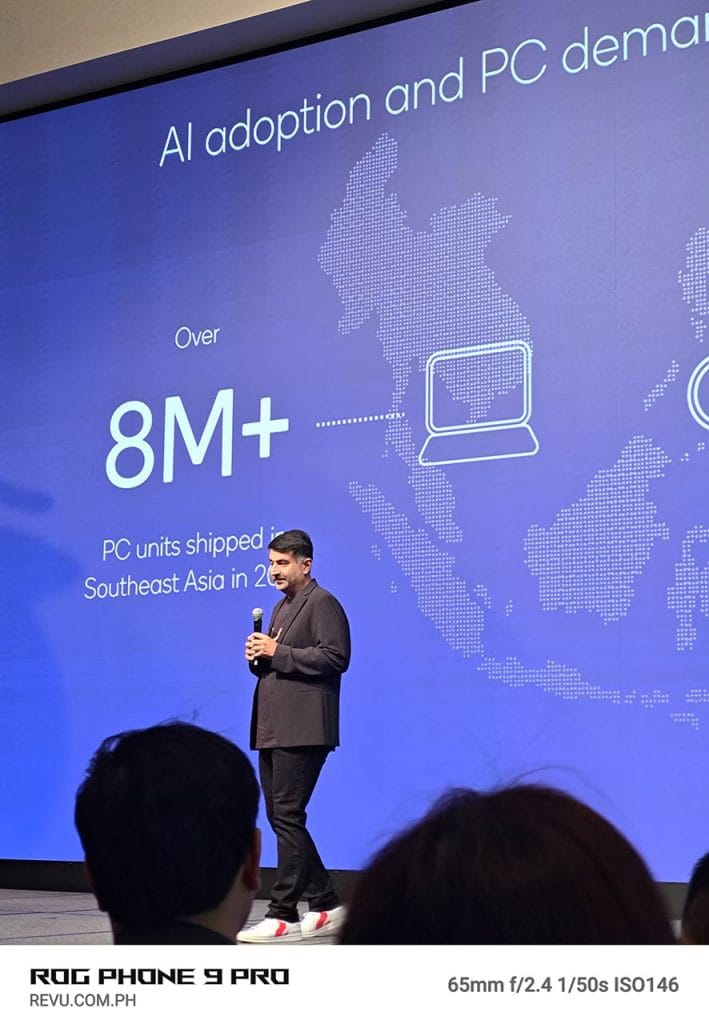





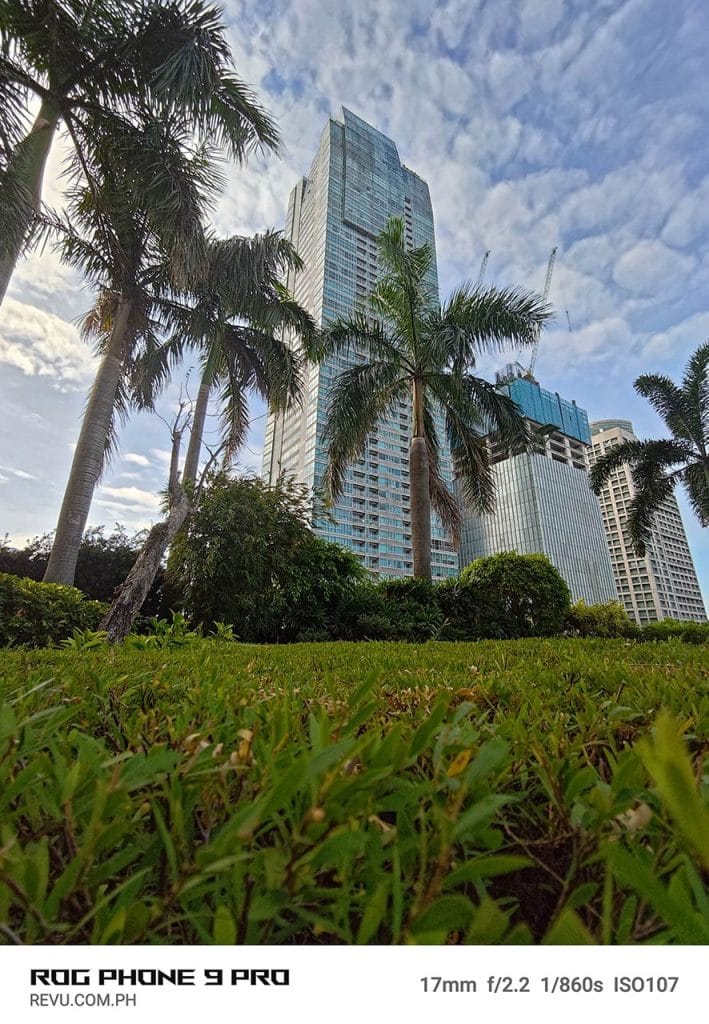


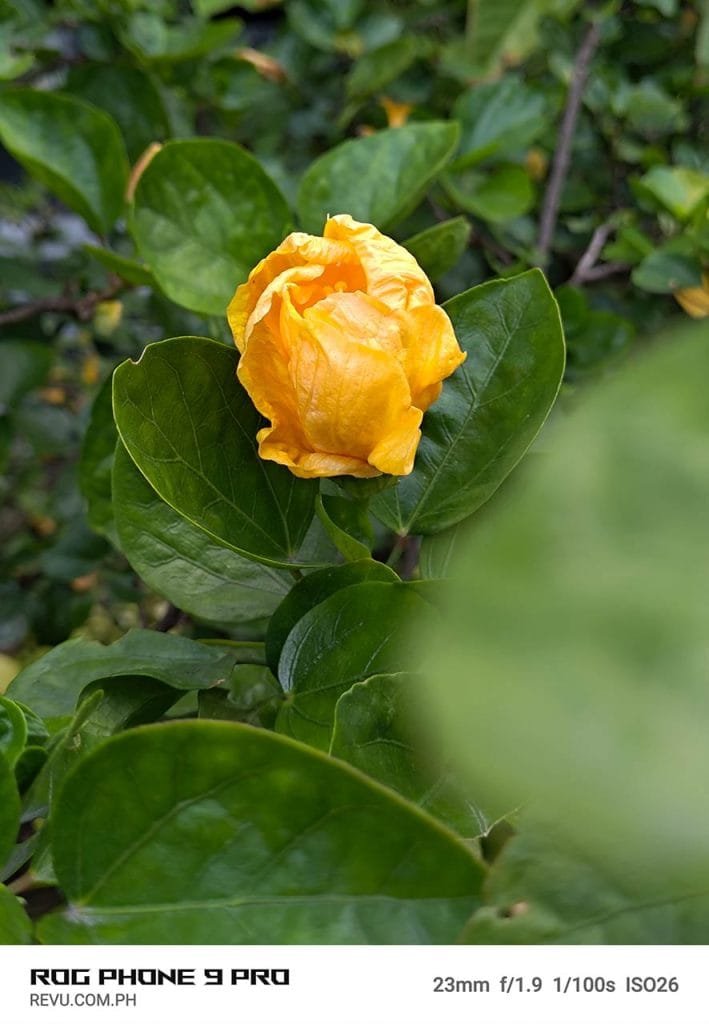


Sample shots
Gear up: Meet the ROG 9 Pro add-ons
ASUS sent over a trio of add-ons for the ROG Phone 9 Pro: the AeroActive Cooler X Pro, the ROG Tessen Mobile Controller, and the ROG Chill Case. We put them through their paces to see if they’re worth the extra cash.
The Chill Case is marketed as the “world’s first phone case with an integrated liquid cooling system,” featuring a Composite Vapor Chamber or CVC material designed to efficiently dissipate heat. It also redirects sound from the top and bottom speakers to the front, a function similarly achieved by the included thin plastic case. However, both cases leave the sides of the smartphone exposed, which could be a dealbreaker for those serious about protection.
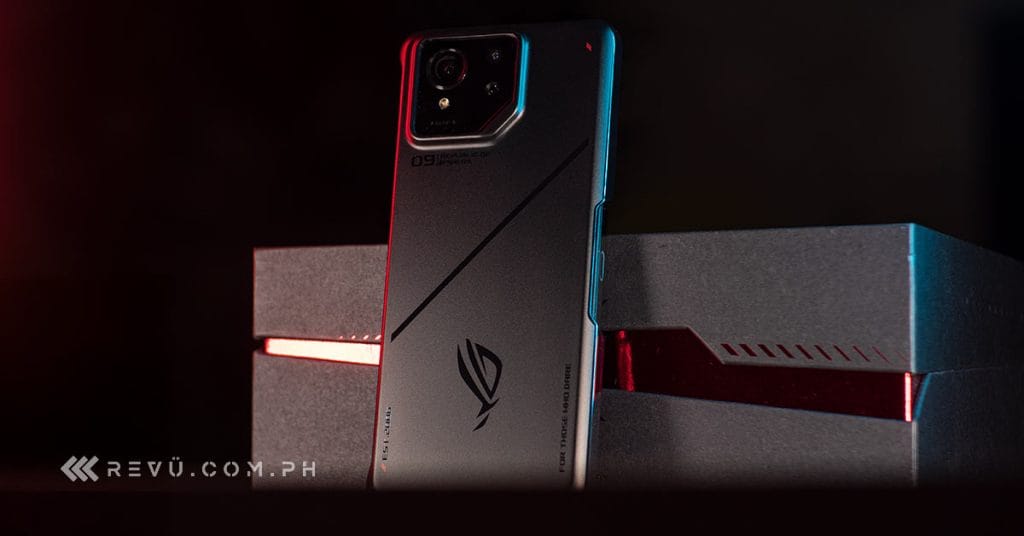
Does the case provide effective cooling, at least? We ran benchmarks, both with and without the case, and, unfortunately, the results were quite underwhelming. Gaming sessions showed no significant temperature drop either. Plus, the full-back design means you can’t use it with the AeroActive Cooler X Pro. Frankly, you’re better off sticking with the bundled plastic case despite its flimsy build.
The ROG Tessen gamepad is a solid option if you’re a frequent traveler and don’t already own a controller. Its foldable design is a major win, slipping easily into a bag or pocket. The signature Aura RGB lighting adds that ROG flair. It also sports two programmable aluminum paddles, customizable via the ROG Armoury Crate app. In fact, the app lets you remap all the controller’s buttons and configure custom functions, including screen capture, gameplay recording, and lighting effects, making it easy to tailor controls to your playstyle.
The AeroActive Cooler X Pro, bundled with the top-tier ASUS ROG Phone 9 Pro, is a serious upgrade. It’s even compatible with last year’s ROG Phone 8 series. You get a high-RPM fan, a Peltier cooler, programmable back buttons, RGB lighting, an extendable kickstand, and passthrough USB-C and 3.5mm ports. ASUS bumped up the fan size and thermal material, claiming a 29% boost in cooling efficiency. And the integrated active subwoofer? It adds a noticeable bass punch.
When it comes to keeping the ROG Phone 9 Pro cool under pressure, the AeroActive Cooler X Pro proves its worth, effectively preventing thermal throttling. In 3DMark’s Steel Nomad Light stress test, we observed a dramatic improvement in stability, jumping from a concerning 63% without the cooler to a rock-solid 98.5% with it. This translated to a tangible five-degree temperature reduction during the same benchmark.
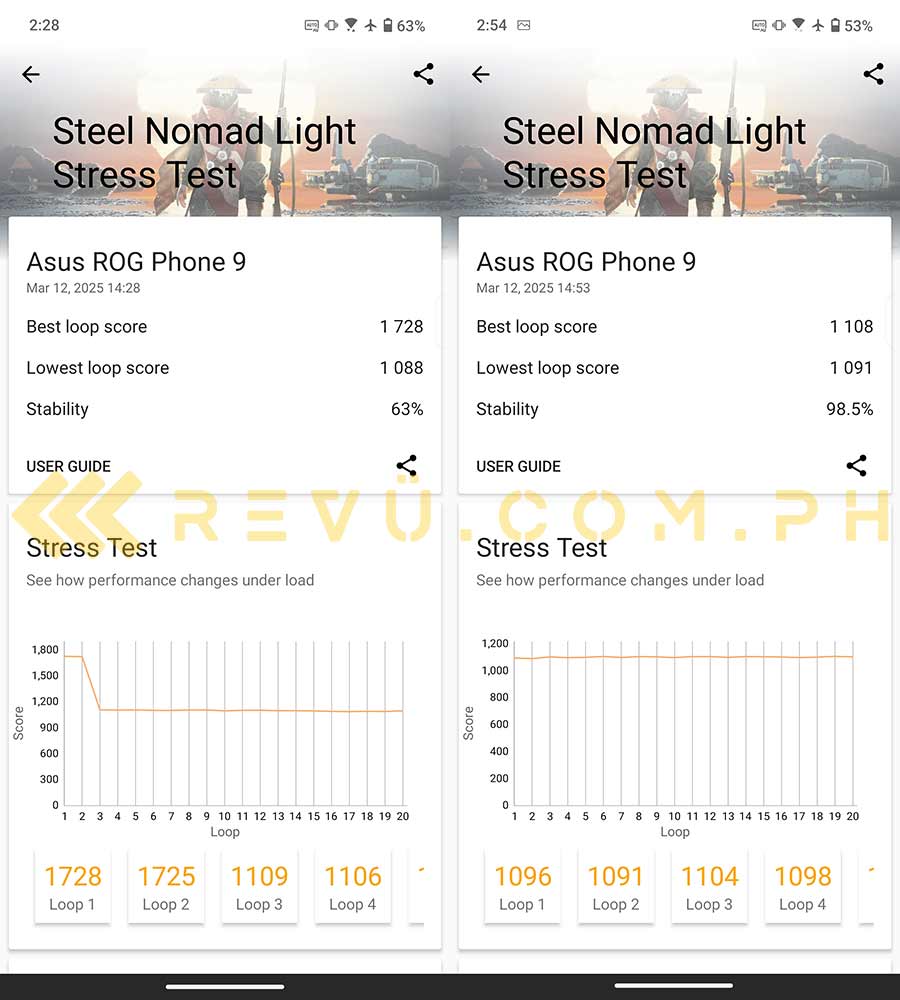
Similarly, the CPU Throttling Test app revealed a significant decrease in performance throttling, with the device maintaining 82% of its maximum potential when the cooler was installed, compared to a mere 70% without it.
Finally, in real-world gaming scenarios, such as our extended playthrough of Final Fantasy VII Remake Intergrade via a PC emulator, the cooler delivered a peak temperature reduction of four degrees, dropping from 53 degrees to 49 degrees. And while a four-degree difference may seem minor, it actually makes a tangible difference between a hot device and a fairly comfortable one.
The AeroActive Cooler X Pro also plays nice with the ASUS ROG Phone 9 Pro’s bypass-charging system, letting you charge and cool simultaneously. This setup — phone (with bypass charging enabled), charger, cooler, and wireless controller — is peak mobile gaming, in our opinion.
The only real downside? ASUS’ cooler accessory doesn’t play well with the company’s own gamepad, forcing you to use a wireless controller. The fan noise is noticeable, too, but easily drowned out by earphones or the unit’s fantastic set of stereo speakers.
Bottom line: The AeroActive Cooler X Pro is a must-have for serious gamers. We’d happily drop the extra cash on the cooler to ensure the best possible performance and hand comfort. ASUS has undeniably delivered an advanced cooling solution that deserves high praise. The Chill Case? Not so much. And the Tessen? A solid travel companion, if you need one.
Setting a new performance standard
Under the hood, the ROG Phone 9 Pro is powered by Qualcomm’s formidable Snapdragon 8 Elite 5G chipset, the same silicon found in flagship heavyweights like the Xiaomi 15 series and Samsung Galaxy S25 Ultra. However, ASUS isn’t merely chasing raw power; the brand is heavily invested in the gaming experience, with the ROG Phone series boasting custom, highly effective cooling solutions and a galaxy of gamer-centric accessories to complement its gaming prowess.
We’ve tested several Snapdragon 8 Elite-based flagships recently, and it has consistently delivered. The same holds true here, except, thanks to its exceptional cooling — both with and without the AeroActive Cooler X Pro — the ROG Phone 9 Pro surpasses its flagship competition. With ASUS’s X Mode (performance mode) enabled, our review unit achieved the highest synthetic benchmark scores we’ve seen on any device. In Antutu Benchmark, specifically, ours reached nearly 3 million points — a testament to its raw processing power.
Performance is undeniably stellar; apps open instantaneously, multitasking is seamless, and console-quality games like Genshin Impact, Bright Memory: Infinite, and GRID Legends achieve peak frame rates, even without the active cooler. The Snapdragon 8 Elite is indeed a powerful chip, and the ROG Phone 9 Pro fully unleashes its potential.

In our thermal-throttling tests, the ASUS ROG Phone 9 Pro performs admirably under prolonged stress. Its passive cooling system maintains peak performance for approximately 15 to 20 minutes before succumbing to thermal throttling.
If you’re thinking about diving into PC emulation, the ROG Phone 9 Pro, especially when you pair it with the AeroActive Cooler X Pro, is honestly your best bet for playing those big AAA games on the go. And here’s why: You can run the active cooler and bypass charging at the same time, which basically cancels out the two biggest heat and throttling issues you face when playing resource-demanding games on a mobile device. We tried out Final Fantasy VII Remake Intergrade on our unit, and it held a pretty steady 30 FPS, balancing visuals and battery life nicely. Even after 30 minutes of play, with the cooler and bypass charging going, the hottest it got was 50 degrees Celsius.

Gaming devices typically prioritize battery endurance, and ASUS delivers on this front. The ROG Phone 9 Pro features a 5,800mAh battery, close to the series’ traditional 6,000mAh standard. In PCMark’s battery-life test, our review unit achieved 22 hours and 5 minutes, surpassing the ASUS ROG Phone 8 Pro‘s 21 hours and 25 minutes with its smaller 5,500mAh cell.
During gaming, Genshin Impact consumed 11% of the battery in 25 minutes with maximum graphics settings and 60 FPS enabled. This test, conducted without the active cooler, indicates efficient power management.
In terms of charging, the Phone 9 Pro retains the previous generation’s 65-watt wired standard. ASUS claims a 46-minute full charge, though real-world testing yields slightly longer times, around 50 minutes, with a 50% charge reached in 20 minutes. Nonetheless, these charging times are pretty commendable.
Most modern flagships tout improved experience courtesy of AI, and the ROG Phone 9 Pro is no exception. For gamers, there’s the ROG Instant Master tool, which can be found in the preloaded Game Genie app. It’s a slick feature that serves up ready-made macro and AirTrigger profiles for specific games, letting you instantly map complex actions and get that edge. If your game isn’t listed, you can ask for a setup. Macros do things like auto-combos or level skips, while AirTrigger shortcuts become quick-access buttons for whatever you need. In Genshin Impact, for example, you can map the shoulder triggers to instantly access the map or pick up items.
Beyond gaming, the ROG Phone 9 Pro offers AI-powered productivity tools. Notably, ASUS’s preloaded Recorder app proved invaluable during a recent trip to Singapore to attend Qualcomm’s regional tech event. This tool transcribes recordings in real-time, allowing us to capture details otherwise missed. For journalists, this feature is crucial. It turns the handset into a powerful tool for reporting and content creation on the go. The app’s accurate and fast transcriptions of technical talks meant we didn’t miss key details, making our work easier and more precise.
Final thoughts
Ultimately, the ASUS ROG Phone 9 Pro is a statement device. It delivers on its promise of unparalleled Android performance, as we experienced during our extensive testing. The hardware is meticulously crafted, the accessories thoughtfully designed (with the AeroActive Cooler X Pro being a standout), and the software intelligently enhanced with AI-driven features.
While the price point, particularly for the top-tier model, is undeniably steep, the sheer power and versatility on offer make a compelling case. As we posed at the outset, the question isn’t simply whether the performance justifies the cost, but rather, whether you’re willing to invest in the apex of mobile gaming and productivity. For those seeking the absolute best Android has to offer, especially in terms of performance, the ASUS ROG Phone 9 Pro stands head and shoulders above its flagship competition, pushing the boundaries of smartphone capabilities.
ASUS ROG Phone 9 Pro specs
- 6.78-inch FHD+ LTPO AMOLED display, 1-120Hz adaptive refresh rate, 165Hz max refresh rate, 2,500 nits peak brightness, Corning Gorilla Glass Victus 2
- 3nm Qualcomm Snapdragon 8 Elite 5G chipset
- Adreno 830 GPU
- 16GB/24GB LPDDR5X RAM
- 512GB/1TB UFS 4.0 storage
- Triple 50-megapixel main, 32-megapixel telephoto, 13-megapixel ultrawide rear cameras
- 32-megapixel RGBW front camera
- Under-display fingerprint reader
- 5,800mAh battery
- 65-watt wired charging, 15-watt wireless charging
- 3.5mm audio port
- 648 mini-LEDs at the back
- Built-in gaming triggers
- Stereo speakers
- IP68 dust and water resistance
- Android 15 with ROG UI
- Color: Phantom Black
Share this Post


